DeWalt DWE4887 Bruksanvisning
DeWalt
Slipmaskin
DWE4887
Läs gratis den bruksanvisning för DeWalt DWE4887 (7 sidor) i kategorin Slipmaskin. Guiden har ansetts hjälpsam av 10 personer och har ett genomsnittsbetyg på 5.0 stjärnor baserat på 5.5 recensioner. Har du en fråga om DeWalt DWE4887 eller vill du ställa frågor till andra användare av produkten? Ställ en fråga
Sida 1/7

INSTRUCTION MANUAL
GUIDE D'UTILISATION
MANUAL DE INSTRUCCIONES
DWE4887, DWE4887N, DW888
Die Grinders
Meules à rectifier les matrices
Esmeriladoras de troquel
INSTRUCTIVO DE OPERACIÓN, CENTROS DE SERVICIO Y PÓLIZA DE
GARANTÍA. ADVERTENCIA: LÉASE ESTE INSTRUCTIVO ANTES DE
USAR EL PRODUCTO.
Defi nitions: Safety Guidelines
The definitions below describe the level of severity for each signal word. Please
read the manual and pay attention to these symbols.
DANGER: Indicates an imminently hazardous situation which, if not avoided,
will result in death or serious injury.
WARNING: Indicates a potentially hazardous situation which, if not avoided,
could result in death or serious injury.
CAUTION: Indicates a potentially hazardous situation which, if not avoided, may
result in minor or moderate injury.
NOTICE: Indicates a practice which, if not not related to personal injury
avoided, may result in property damage.
IF YOU HAVE ANY QUESTIONS OR COMMENTS ABOUT THIS OR ANY DEWALT TOOL, CALL
US TOLL FREE AT: 1-800-4-DEWALT (1-800-433-9258).
WARNING: To reduce the risk of injury, read the instruction manual.
General Power Tool Safety Warnings
WARNING! Read all safety warnings and all instructions. Failure to follow the warnings
and instructions may result in electric shock, fire and/or serious injury.
SAVE ALL WARNINGS AND INSTRUCTIONS
FOR FUTURE REFERENCE
The term “power tool” in the warnings refers to your mains-operated (corded) power tool or battery-
operated (cordless) power tool.
1) WORK AREA SAFETY
a) Keep work area clean and well lit. Cluttered or dark areas invite accidents.
b) Do not operate power tools in explosive atmospheres, such as in the presence of
flammable liquids, gases or dust. Power tools create sparks which may ignite the dust or
fumes.
c) Keep children and bystanders away while operating a power tool. Distractions can
cause you to lose control.
2) ELECTRICAL SAFETY
a) Power tool plugs must match the outlet. Never modify the plug in any way. Do not
use any adapter plugs with earthed (grounded) power tools. Unmodified plugs and
matching outlets will reduce risk of electric shock.
b) Avoid body contact with earthed or grounded surfaces such as pipes, radiators,
ranges and refrigerators. There is an increased risk of electric shock if your body is earthed
or grounded.
c) Do not expose power tools to rain or wet conditions. Water entering a power tool will
increase the risk of electric shock.
d) Do not abuse the cord. Never use the cord for carrying, pulling or unplugging the
power tool. Keep cord away from heat, oil, sharp edges or moving parts. Damaged
or entangled cords increase the risk of electric shock.
e) When operating a power tool outdoors, use an extension cord suitable for outdoor
use. Use of a cord suitable for outdoor use reduces the risk of electric shock.
f) If operating a power tool in a damp location is unavoidable, use a ground fault
circuit interrupter (GFCI) protected supply. Use of a GFCI reduces the risk of electric
shock.
3) PERSONAL SAFETY
a) Stay alert, watch what you are doing and use common sense when operating a
power tool. Do not use a power tool while you are tired or under the influence of
drugs, alcohol or medication. A moment of inattention while operating power tools may
result in serious personal injury.
b) Use personal protective equipment. Always wear eye protection. Protective
equipment such as dust mask, non-skid safety shoes, hard hat, or hearing protection used
for appropriate conditions will reduce personal injuries.
c) Prevent unintentional starting. Ensure the switch is in the off position before
connecting to power source and/or battery pack, picking up or carrying the tool.
Carrying power tools with your finger on the switch or energizing power tools that have the
switch on invites accidents.
d) Remove any adjusting key or wrench before turning the power tool on. A wrench or
a key left attached to a rotating part of the power tool may result in personal injury.
e) Do not overreach. Keep proper footing and balance at all times. This enables better
control of the power tool in unexpected situations.
f) Dress properly. Do not wear loose clothing or jewelry. Keep your hair, clothing and
gloves away from moving parts. Loose clothes, jewelry or long hair can be caught in
moving parts.
g) If devices are provided for the connection of dust extraction and collection facilities,
ensure these are connected and properly used. Use of dust collection can reduce dust-
related hazards.
4) POWER TOOL USE AND CARE
a) The Do not force the power tool. Use the correct power tool for your application.
correct power tool will do the job better and safer at the rate for which it was designed.
b) Do not use the power tool if the switch does not turn it on and off. Any power tool
that cannot be controlled with the switch is dangerous and must be repaired.
c) Disconnect the plug from the power source and/or the battery pack from the power
tool before making any adjustments, changing accessories, or storing power tools.
Such preventive safety measures reduce the risk of starting the power tool accidentally.
d) Store idle power tools out of the reach of children and do not allow persons
unfamiliar with the power tool or these instructions to operate the power tool.
Power tools are dangerous in the hands of untrained users.
DEWALT Industrial Tool Co., 701 East Joppa Road, Baltimore, MD 21286
(FEB14) Part No. N279291 DWE4887, DWE4887N, DW888
Copyright © 2002, 2004, 2005, 2007, 2011, 2013, 2014 DEWALT
The following are trademarks for one or more DEWALT power tools: the yellow and black color scheme; the “D”
shaped air intake grill; the array of pyramids on the handgrip; the kit box configuration; and the array of lozenge-
shaped humps on the surface of the tool.
If you have questions or comments, contact us.
Pour toute question ou tout commentaire, nous contacter.
Si tiene dudas o comentarios, contáctenos.
1-800-4-D WALT • www.dewalt.comE
e) Maintain power tools. Check for misalignment or binding of moving parts, breakage
of parts and any other condition that may affect the power tool’s operation. If
damaged, have the power tool repaired before use. Many accidents are caused by
poorly maintained power tools.
f) Keep cutting tools sharp and clean. Properly maintained cutting tools with sharp cutting
edges are less likely to bind and are easier to control.
g) Use the power tool, accessories and tool bits, etc. in accordance with these
instructions, taking into account the working conditions and the work to be
performed. Use of the power tool for operations different from those intended could result
in a hazardous situation.
5) SERVICE
a) Have your power tool serviced by a qualified repair person using only identical
replacement parts. This will ensure that the safety of the power tool is maintained.
SAFETY INSTRUCTIONS FOR ALL OPERATIONS
Safety Warnings Common for Grinding, Sanding, Polishing,
Carving or Abrasive Cutting-Off Operations
a) This power tool is intended to function as a grinder, sander, polisher, carving or
cut-off tool. Read all safety warnings, instructions, illustrations and specifications
provided with this power tool. Failure to follow all instructions listed below may result in
electric shock, fire and/or serious injury.
b) Operations such as wire brushing are not recommended to be performed with this
power tool. Operations for which the power tool was not designed may create a hazard and
cause personal injury.
c) Do not use accessories which are not specifically designed and recommended by
the tool manufacturer. Just because the accessory can be attached to your power tool, it
does not assure safe operation.
d) The rated speed of the accessories must be at least equal to the maximum speed
marked on the power tool. Accessories running faster than their rated speed can break
and fly apart.
e) The outside diameter and the thickness of your accessory must be within the
capacity rating of your power tool. Incorrectly sized accessories cannot be adequately
guarded or controlled.
f) The arbor size of wheels, sanding drums or any other accessory must properly fit
the spindle or collet of the power tool. Accessories that do not match the mounting
hardware of the power tool will run out of balance, vibrate excessively and may cause loss
of control.
g) Mandrel mounted wheels, sanding drums, cutters or other accessories must be
fully inserted into the collet or chuck. If the mandrel is insufficiently held and/or the
overhang of the wheel is too long, the mounted wheel may become loose and be ejected at
high velocity.
h) Do not use a damaged accessory. Before each use, inspect the accessory such as
abrasive wheels for chips and cracks, sanding drum for cracks, tear or excess wear,
wire brush for loose or cracked wires. If power tool or accessory is dropped, inspect
for damage or install an undamaged accessory. After inspecting and installing an
accessory, position yourself and bystanders away from the plane of the rotating
accessory and run the power tool at maximum no-load speed for one minute.
Damaged accessories will normally break apart during this test time.
i) Wear personal protective equipment. Depending on application, use face shield,
safety goggles or safety glasses. As appropriate, wear dust mask, hearing
protectors, gloves and workshop apron capable of stopping small abrasive or
workpiece fragments. The eye protection must be capable of stopping flying debris
generated by various operations. The dust mask or respirator must be capable of filtrating
particles generated by your operation. Prolonged exposure to high intensity noise may cause
hearing loss.
j) Keep bystanders a safe distance away from work area. Anyone entering the work
area must wear personal protective equipment. Fragments of workpiece or of a broken
accessory may fly away and cause injury beyond immediate area of operation.
k) Hold power tool by insulated gripping surfaces only, when performing an operation
where the cutting accessory may contact hidden wiring or its own cord. Cutting
accessory contacting a “live” wire may make exposed metal parts of the power tool “live”
and could give the operator an electric shock.
l) Always hold the tool firmly in your hand(s) during the start-up. The reaction torque of
the motor, as it accelerates to full speed, can cause the tool to twist.
m) Use clamps to support workpiece whenever practical. Never hold a small workpiece
in one hand and the tool in the other hand while in use. Clamping a small workpiece
allows you to use your hand(s) to control the tool. Round material such as dowel rods, pipes
or tubing have a tendency to roll while being cut, and may cause the bit to bind or jump
toward you.
n) Position the cord clear of the spinning accessory. If you lose control, the cord may be
cut or snagged and your hand or arm may be pulled into the spinning accessory.
o) Never lay the power tool down until the accessory has come to a complete stop.
The spinning accessory may grab the surface and pull the power tool out of your control.
p) After changing the bits or making any adjustments, make sure the collet nut, chuck
or any other adjustment devices are securely tightened. Loose adjustment devices
can unexpectedly shift, causing loss of control, loose rotating components will be violently
thrown.
q) Do not run the power tool while carrying it at your side. Accidental contact with the
spinning accessory could snag your clothing, pulling the accessory into your body.
r) Regularly clean the power tool’s air vents. The motor’s fan will draw the dust inside the
housing and excessive accumulation of powdered metal may cause electrical hazards.
s) Do not operate the power tool near flammable materials. Sparks could ignite these
materials.
t) Do not use accessories that require liquid coolants. Using water or other liquid coolants
may result in electrocution or shock.
FURTHER SAFETY INSTRUCTIONS FOR ALL OPERATIONS
Kickback and Related Warnings
Kickback is a sudden reaction to a pinched or snagged rotating wheel, sanding pad, brush
or any other accessory. Pinching or snagging causes rapid stalling of the rotating accessory
which in turn causes the uncontrolled power tool to be forced in the direction opposite of the
accessory’s rotation.
For example, if an abrasive wheel is snagged or pinched by the workpiece, the edge of the wheel
that is entering into the pinch point can dig into the surface of the material causing the wheel to
climb out or kick out. The wheel may either jump toward or away from the operator, depending
on direction of the wheel’s movement at the point of pinching. Abrasive wheels may also break
under these conditions.
Kickback is the result of tool misuse and/or incorrect operating procedures or conditions and
can be avoided by taking proper precautions as given below:
a) Maintain a firm grip on the power tool and position your body and arm to allow you
to resist kickback forces. The operator can control kickback forces, if proper precautions
are taken.
b) Use special care when working corners, sharp edges etc. Avoid bouncing and
snagging the accessory. Corners, sharp edges or bouncing have a tendency to snag the
rotating accessory and cause loss of control or kickback.
c) Do not attach a toothed saw blade. Such blades create frequent kickback and loss of
control.
d) Always feed the bit into the material in the same direction as the cutting edge is
exiting from the material (which is the same direction as the chips are thrown).
Feeding the tool in the wrong direction causes the cutting edge of the bit to climb out of the
work and pull the tool in the direction of this feed.
e) When using rotary files, cut-off wheels, high-speed cutters or tungsten carbide
cutters, always have the work securely clamped. These wheels will grab if they become
slightly canted in the groove, and can kickback. When a cut-off wheel grabs, the wheel itself
usually breaks. When a rotary file, high-speed cutter or tungsten carbide cutter grabs, it may
jump from the groove and you could lose control of the tool.
Safety Warnings Specifi c for Grinding and Abrasive
Cutting-Off Operations
a) Use only wheel types that are recommended for your power tool and only for
recommended applications. For example: do not grind with the side of a cut-off
wheel. Abrasive cut-off wheels are intended for peripheral grinding, side forces applied to
these wheels may cause them to shatter.
b) For threaded abrasive cones and plugs use only undamaged wheel mandrels with
an unrelieved shoulder flange that are of correct size and length. Proper mandrels
will reduce the possibility of breakage.
c) Do not “jam” the cut-off wheel or apply excessive pressure. Do not attempt to
make an excessive depth of cut. Overstressing the wheel increases the loading and
susceptibility to twisting or snagging of the wheel in the cut and the possibility of kickback or
wheel breakage.
d) Do not position your hand in line with and behind the rotating wheel. When the
wheel, at the point of operation, is moving away from your hand, the possible kickback may
propel the spinning wheel and the power tool directly at you.
e) When wheel is pinched, snagged or when interrupting a cut for any reason, switch
off the power tool and hold the power tool motionless until the wheel comes to a
complete stop. Never attempt to remove the cut-off wheel from the cut while the
wheel is in motion, otherwise kickback may occur. Investigate and take corrective
action to eliminate the cause of wheel binding.
f) Do not restart the cutting operation in the workpiece. Let the wheel reach full
speed and carefully reenter the cut. The wheel may bind, walk up or kickback if the
power tool is restarted in the workpiece.
g) Support panels or any oversized workpiece to minimize the risk of wheel pinching
and kickback. Large workpieces tend to sag under their own weight. Supports must be
placed under the workpiece near the line of cut and near the edge of the workpiece on both
sides of the wheel.
Produktspecifikationer
| Varumärke: | DeWalt |
| Kategori: | Slipmaskin |
| Modell: | DWE4887 |
Behöver du hjälp?
Om du behöver hjälp med DeWalt DWE4887 ställ en fråga nedan och andra användare kommer att svara dig
Slipmaskin DeWalt Manualer
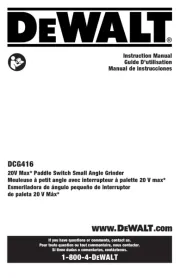
28 Juli 2025
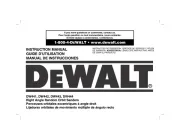
7 Juni 2025
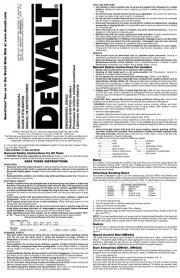
6 Juni 2025

4 Januari 2025

31 December 2025

7 Oktober 2024

24 September 2024

24 September 2024

24 September 2024

24 September 2024
Slipmaskin Manualer
- Cotech
- Toolland
- Truper
- Gaggia
- Gladiator
- Nuova Simonelli
- Profitec
- Silverline
- Gorenje
- Dedra
- Malmbergs
- Solo
- RIDGID
- Sthor
- Fieldmann
Nyaste Slipmaskin Manualer
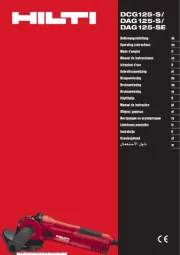
14 Oktober 2025
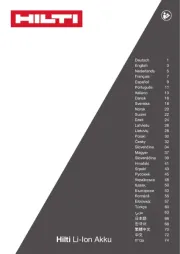
14 Oktober 2025
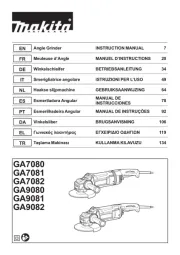
13 Oktober 2025
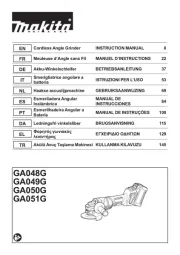
13 Oktober 2025
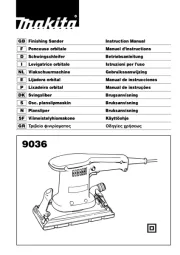
13 Oktober 2025
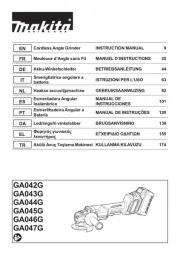
13 Oktober 2025
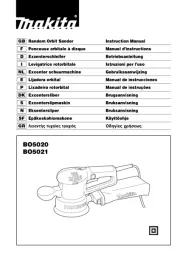
13 Oktober 2025
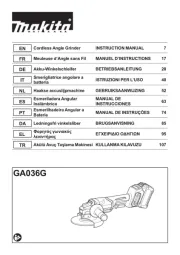
13 Oktober 2025
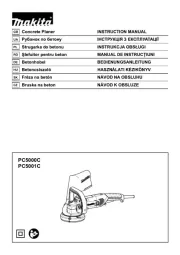
13 Oktober 2025
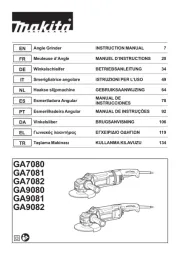
13 Oktober 2025